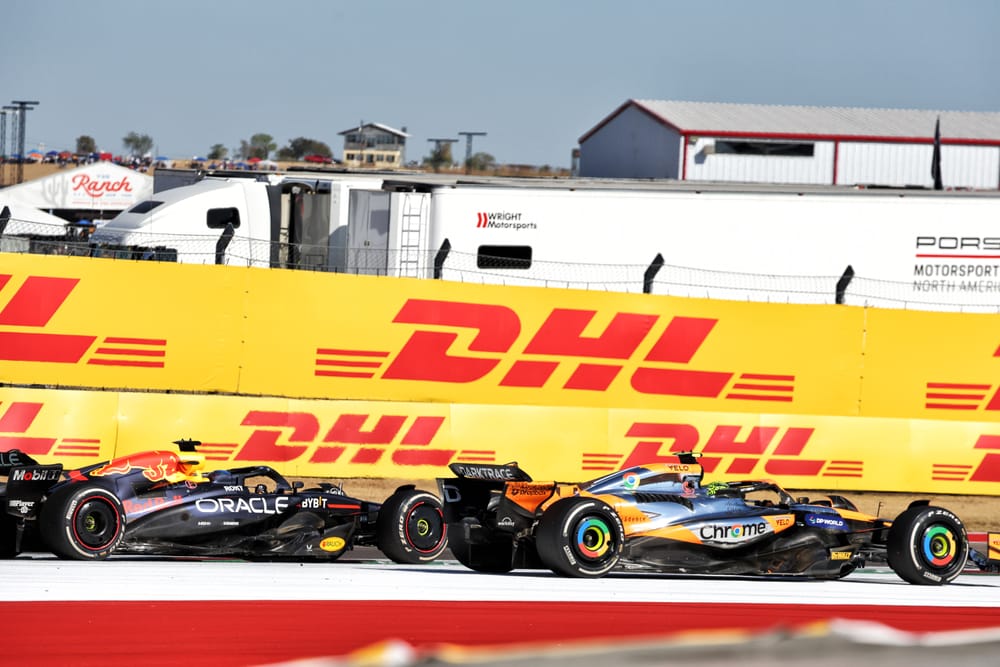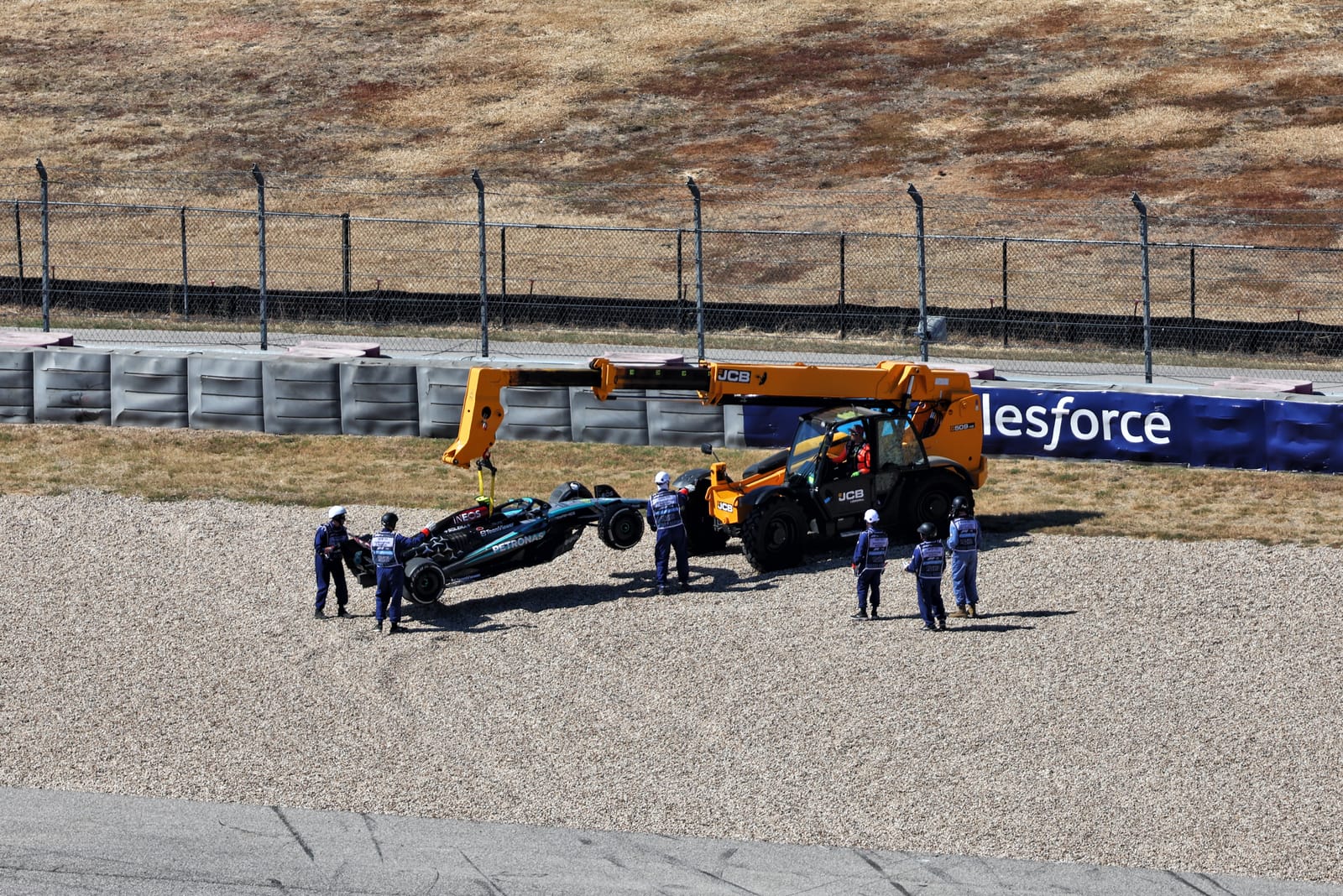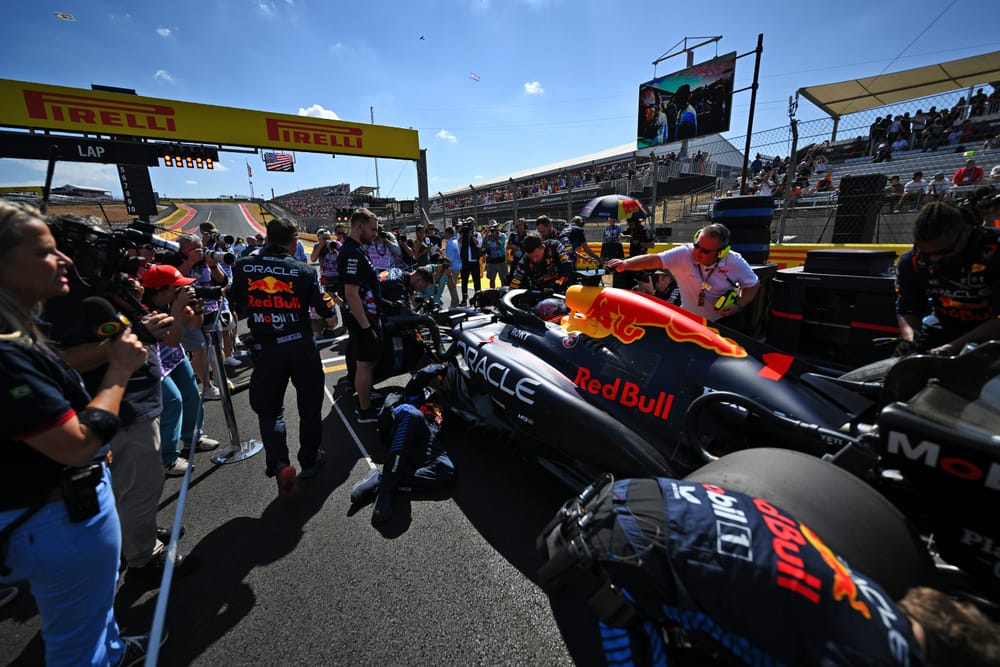Up Next

The signs were there about Ferrari at the United States Grand Prix. Especially Ferrari on the mediums.
While the focus was on the revitalised Red Bull of Max Verstappen and the starring Lando Norris and his stunning pole, the red cars had been consistently faster than either when on the medium tyre.
That didn’t help Ferrari much in qualifying. But with the medium the starting tyre, in what developed into a one-stop race, it was fantastically valuable.
The complication was always going to be getting track position, given that Carlos Sainz and Charles Leclerc had qualified only on the second row. That problem was solved by Norris as he fought out the lead with Verstappen into Turn 1. In the McLaren allowing the Red Bull down its inside with too generous a gap after having initially beaten it off the line, it put Verstappen in position to run Norris out wide.
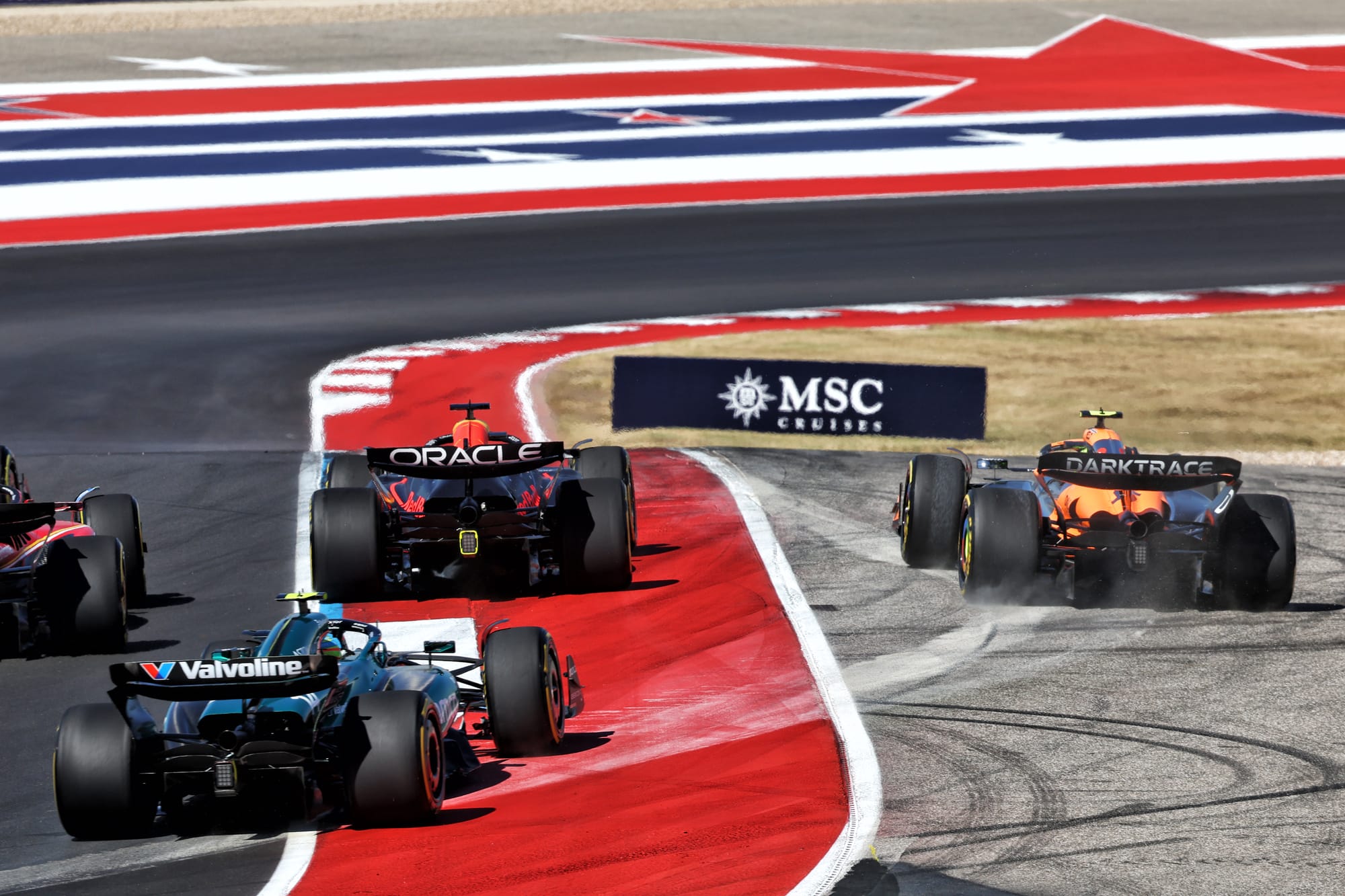
But so far wide did Verstappen need to go on the exit in order to drive the McLaren off track that it opened a gap down his inside wide enough for a Ferrari - that of Leclerc. Sainz had been alongside him but had to back off to avoid hitting the Red Bull - thereby releasing Leclerc.
Verstappen’s actions into Turn 1 determined the route to Ferrari being able to exploit what was the fastest car on the day - and which of the Ferrari drivers was the main beneficiary of that.
There’d be more Verstappen run-wide action late in the race, of course, as he defended his third position from the attacks of Norris at Turn 12. The layout of the track and the asphalt run-off areas mean that such side-by-side off-track incidents fall into the hands of the race stewards. Who are obliged to make a call.
Did Norris make the the overtake by leaving the track? Yes. Was he forced off the track by Verstappen to avoid contact? Yes. So, should the overtake count? That’s where it becomes horribly subjective and a totally unsatisfying way of deciding a position.
Whatever decision the stewards made, someone is going to feel affronted. In this case it was McLaren, as Norris took a five-second penalty, which dropped him back behind Verstappen in the official result. McLaren’s Andrea Stella argued eloquently that, as soon as Verstappen ceased to change direction and ran straight on, he was in contravention of the regulations.
But that controversy raged a long way behind the two Ferraris. Sainz - who had a brief scare with a power glitch and the smell of fuel, which disappeared once he was instructed through some switch changes - undercut his way past Verstappen with a stop which was very early for a one-stop (lap 21, with 35 laps still to go) yet had no trouble staying well clear of the newer-tyred Red Bull in the second stint.
Ferrari's Monza upgrade that has worked so well since - but only on the outlier-type tracks we have had since then - was always going to face its real litmus test here, around a conventional, aerodynamically demanding track.
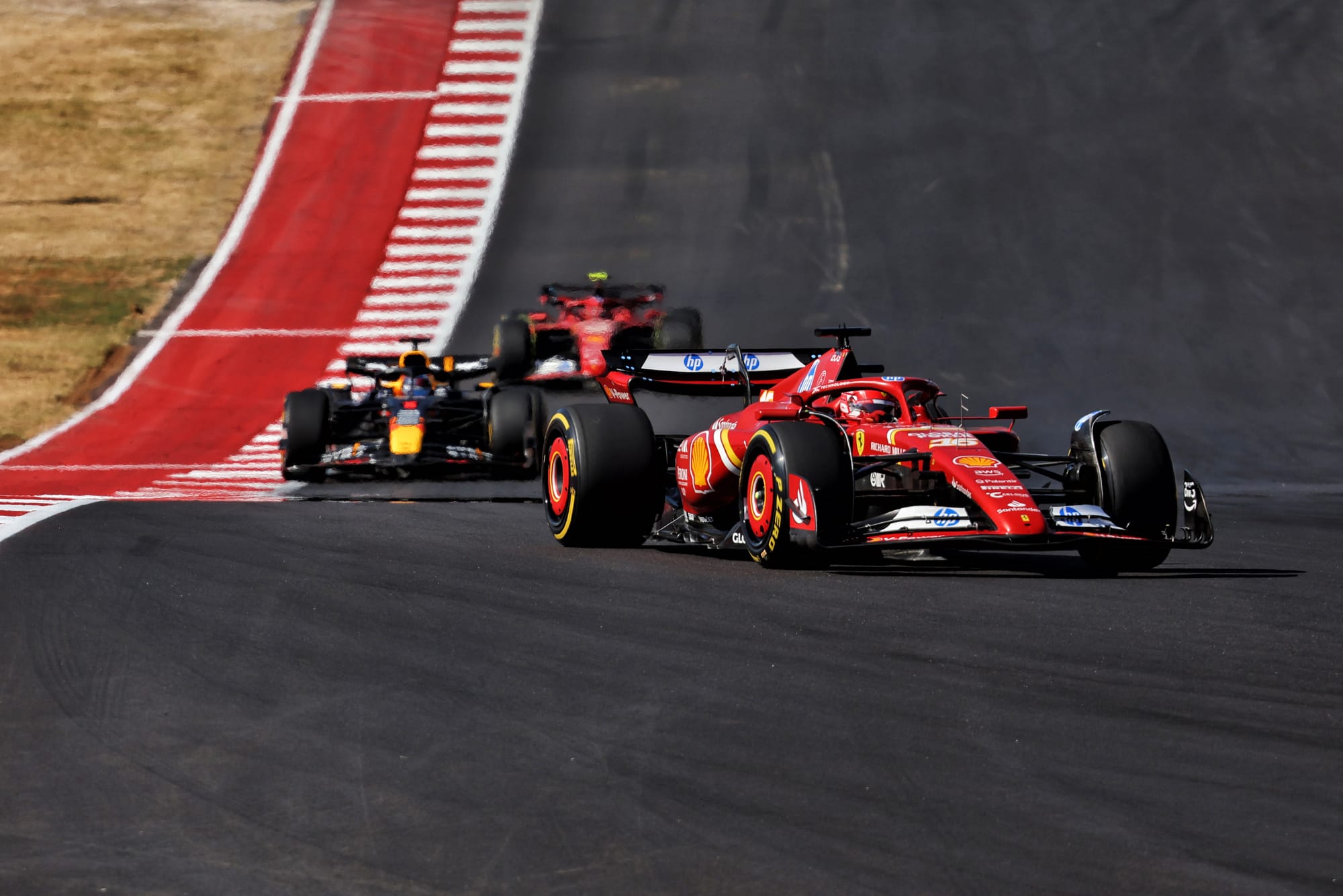
It passed that test with flying colours. Its only weakness was in its slightly understeery balance when on the soft (C4) tyre needed for qualifying. But even that was probably overplayed - because Sainz had been on the verge of a time very close to pole on his final Q3 run before falling foul of the double yellows for George Russell’s Turn 19 accident.
That accident of Russell’s formed a major part of what was a disastrous weekend for Mercedes, only partly compensated by Russell’s strong race from the pitlane to overtaking Sergio Perez’s ninth place-starting Red Bull for sixth going into the last lap.
Lewis Hamilton, after going out in Q1 before vaulting up to 12th on the opening lap, spun out on his own through that same Turn 19. There was a gusty wind there all weekend, he was on cold, hard compound tyres, but still… Hamilton had no idea where it came from, insisting he wasn’t even pushing hard so early in the race.
The updated car’s form was wildly variable, with Hamilton a serious pole contender in sprint qualifying before encountering yellow flags, but then nowhere in qualifying proper. Although Russell qualified sixth, that was 0.6s adrift of Norris and Verstappen. His accident destroyed the upgraded bodywork and floor, so he was back to pre-update spec for the grand prix and starting from the pitlane.
“I don’t think we have a fundamental issue on the upgrade,” said Toto Wolff of the most capricious car on the grid. “I think it's more interaction on the aero and on mechanical. We still don’t have a full understanding.”
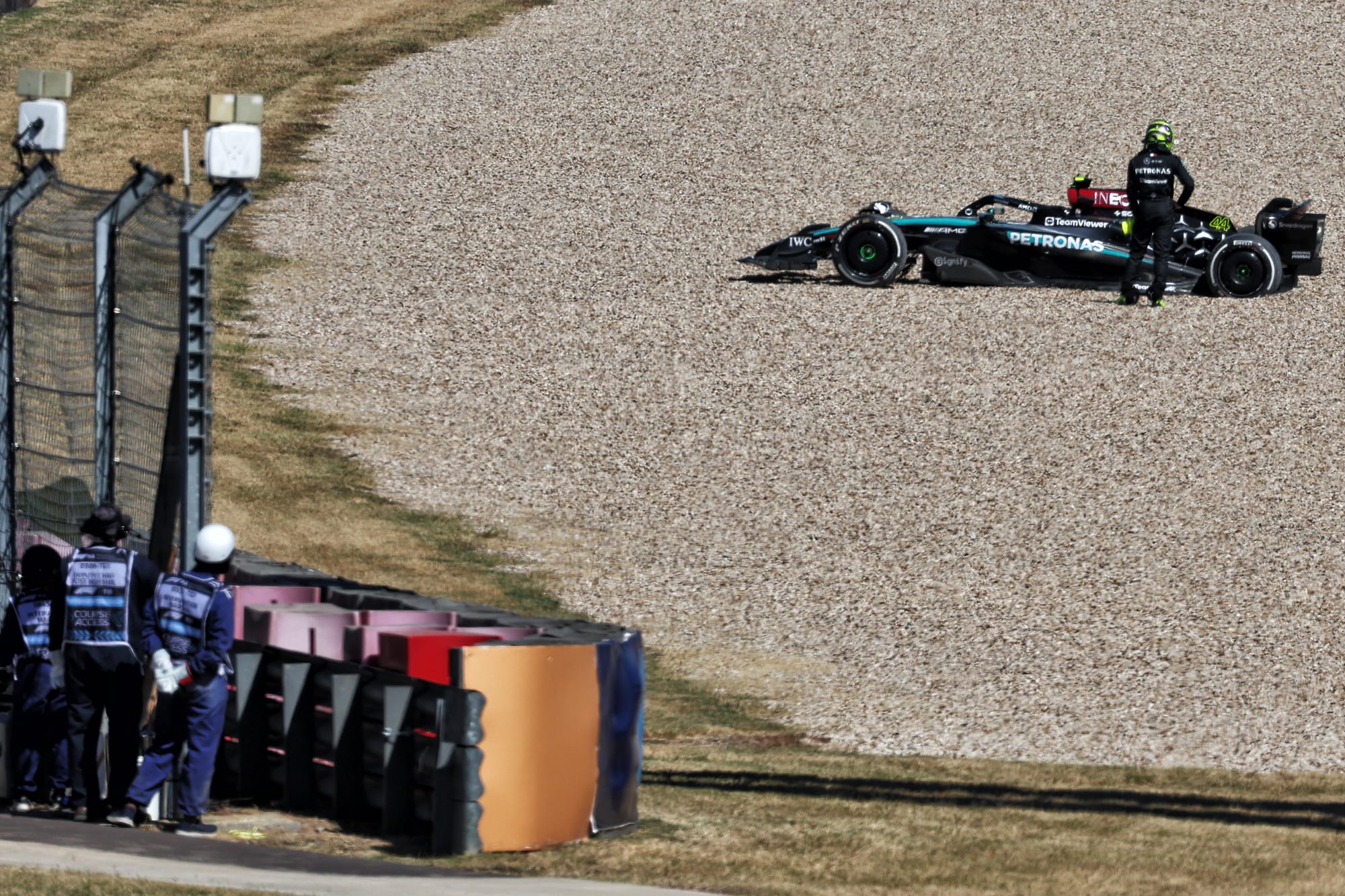
That said, McLaren was far from its usual level. Although Norris overachieved in qualifying by setting pole (possibly helped by the Russell crash), once he’d been bundled back to fourth through the first turn contretemps, he had nothing which could have worried the Ferraris even if he’d been running with them.
The picture of him falling behind Verstappen and then catching him later in the stint was not so much a car trait as a deliberate decision by the pitwall.
Once he was behind the Ferraris and Verstappen, the pace was being managed so as to extend the stint.
“It worked much better than we were expecting,” said Stella.
Because the graining of the fronts ceased to be a problem as the tyres wore, it allowed Norris to run at a very good pace six laps longer than Verstappen, five laps longer than Leclerc and 10 laps longer than Sainz before the switch from mediums to hards. The tyre advantage that gave him in the second stint pulled back all the time he’d lost to Verstappen in the first stint, revealing the two cars as quite equally matched on the day.
Oscar Piastri ran line astern to Norris on much the same long opening stint strategy. He was close enough that the team was preparing to use him to close up to less than five seconds on Verstappen in the expectation that Max - and not Norris - would be the one penalised for the Turn 12 incident.
The Red Bull wasn’t quite as sharp as it had looked when Verstappen blitzed the Sprint race, its balance a little more understeery, and it wasn’t really liking the hard (C2) compound. Which will certainly have helped the McLaren.
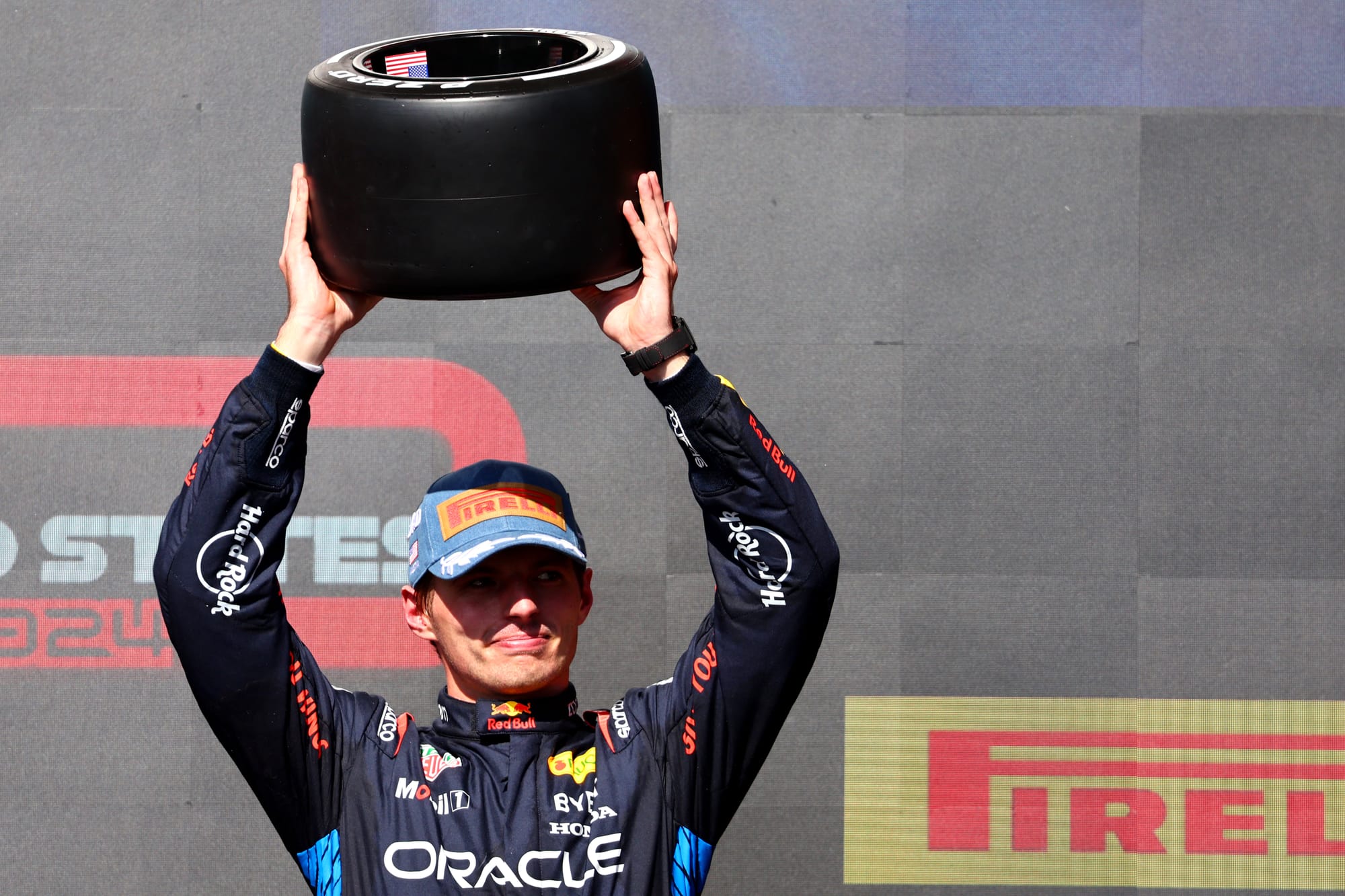
“It was not a surprise to us that this was not a great track for us,” explained Stella of the MCL38’s reduced potency here. “Braking into very low-speed and also some very high-speed sections; we know that in these two situations, our car is not at the best of its performance.
“And for instance, the very low speed and the very high speed is also where Red Bull are very good. So if we consider that Ferrari, they were already competitive, if we consider the track layout, and if we consider that Red Bull had three weeks to look at data and think what is going on with their car - and we talk about Red Bull, a very competent group of engineers - then I'm not surprised that here in Austin, we kind of struggled.”
These things were not the concern of Leclerc. He’d been a little disappointed in qualifying only fourth, around 0.1s off Sainz.
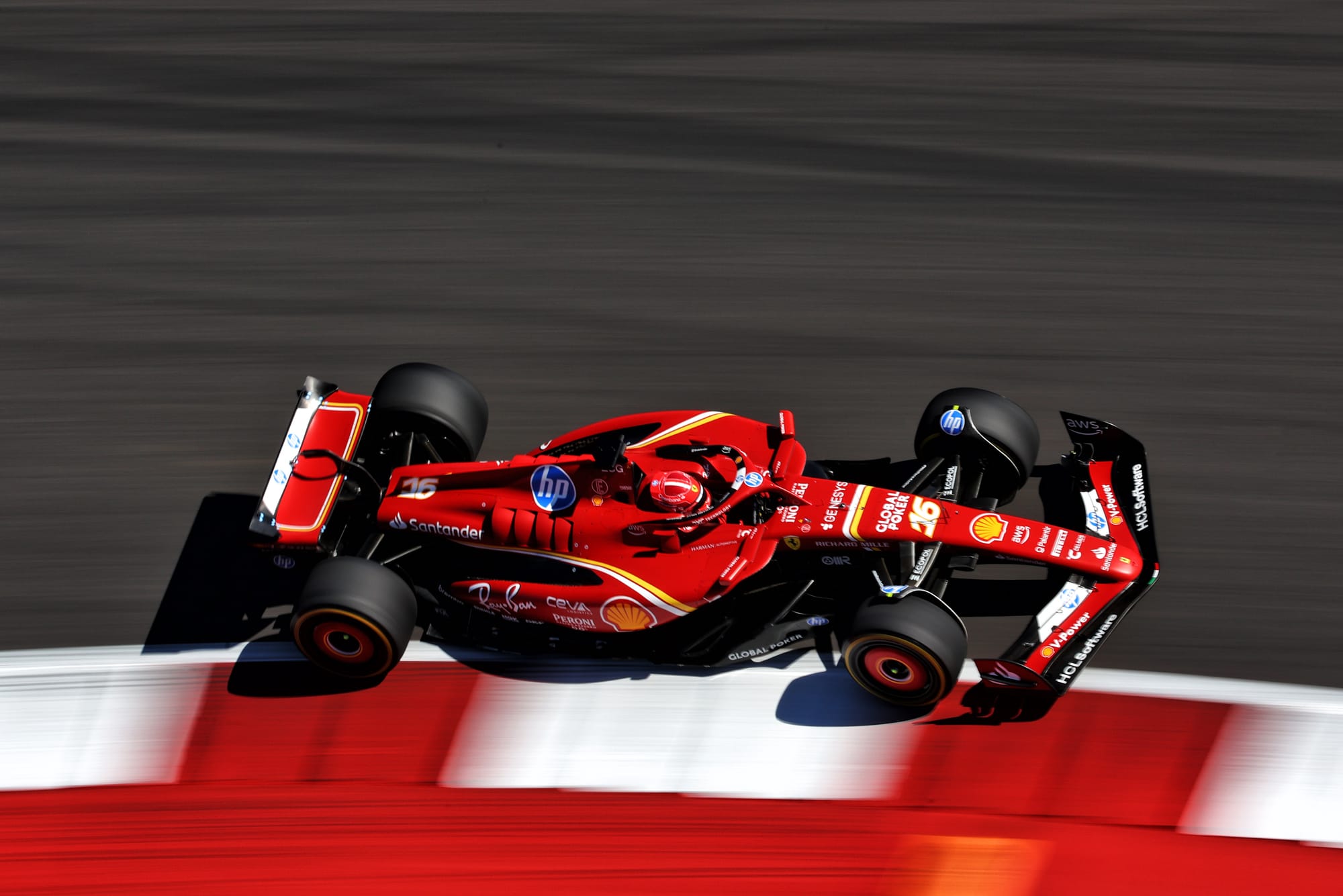
With so little set-up time in the sprint format, Ferrari had split its set-ups into qualifying - and Leclerc’s lower floor height gave him a crashy ride through the crucial Esses. He could hardly believe his luck as the Verstappen/Norris niggle parted the sea in front of him - and the way to victory became unambiguous.
His pace advantage over Verstappen was audacious. He was well out of DRS reach after the first lap (and again on the restart from the Hamilton-induced safety car) and continued to pull out almost five seconds in seven laps.
If initially it seemed like he might be pushing his tyres a little hard on a heavy fuel load, that was soon revealed as a non-issue. The longer the race went on, the bigger the gap over his pursuer.
“It was a lonely race,” Leclerc smiled. “But a good lonely.”

